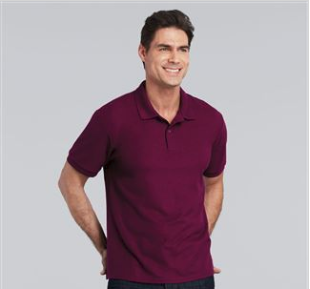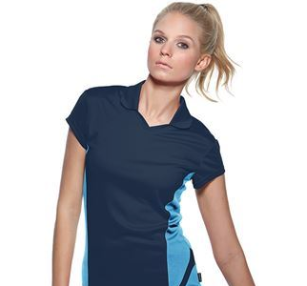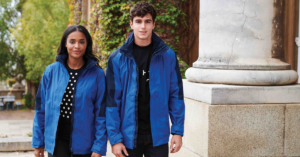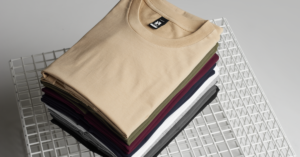

As the perfect compromise between smart and casual, polo shirts are ideal for any number of professional or personal scenarios.
As part of the uniform in a corporate, warehouse or hospitality setting, they ensure staff look the part and exude an aura of efficiency and expertise. Meanwhile, they’re also great when worn for sporting occasions or even as part of your everyday wardrobe. Stylish, comfortable and contemporary, it’s no surprise why the humble polo shirt is incredibly popular across all strata of society.
Of course, the details of the shirt itself are all-important in creating that first impression. The fabric, colours and design should all be chosen carefully to reflect the ethos of your brand (if comprising part of a uniform) or to express your individuality (if being worn as a casual item of clothing). One aspect of polo shirts which perhaps doesn’t receive quite so much attention as others, however, is the collar.
A short history of the polo shirt collar
The collar is the defining feature of a polo shirt, since the garment gained its name from the fact that the first polos were worn by the British Army as the played the game of the same name on horseback. The shirts they wore were virtually indistinguishable from those of any other kind – except for the fact that the collars were buttoned down to prevent them from flapping around during motion.
This small but important modification caught the eye of John E Brooks, who was the grandson of Henry Sands Brooks, the founder of America’s oldest clothier, Brooks Brothers. Inspired to apply the same detail to all Brooks Brothers’ dress shirts, the buttoned down collar popularised by polo shirts quickly became “the most imitated item in the world of fashion”, according to popular legend.
Of course, it’s highly unlikely that you’ll be putting your polo shirt to the use that its name first implied, but the collar remains one of the most visually striking aspects of its design. For that reason, it’s important to be aware of the various options available to you when making your selection.
Types of polo shirt collars
In general, there are three different styles of collar to choose from when it comes to a polo shirt. These are comprised of:
- Self-fabric collars. As the name suggests, these collars are constructed from exactly the same fabric as the rest of the garment. This means that it is often both more comfortable and more long-lasting than some other options, since it is generally manufactured from high-quality materials. It creates an impressively professional aesthetic that is perfect for working environments such as retail or hospitality.
- Knitted collars. Knitted collars are perhaps the most popular option on the market and, similar to self-fabric collars, are created using the same yarns as the body and sleeves of the garment. However, unlike self-fabric collars, knitted collars can incorporate patterns and colours different from that contained within the rest of the polo, allowing for greater customisation. They’re ideal for use in offices or warehouses with a smart/casual dress code.
- Contrast collars. Contrast collars are more closely aligned with the original polo shirts sported by the British Army on horseback. The “contrast” in their name comes not only from the two- or three-tone colours used to create a striking disparity with rest of the garment, but also from the fact that they’re constructed from different material. Cotton is the most popular choice, especially for sportswear, but denim is an option for a more refined look.
Other things to consider
One common complaint when it comes to polo shirt collars – especially those made from soft fabrics like cotton – is that the edges of the collar have a tendency to curl up over time and after multiple washes. This can create an unsightly look which tarnishes the professional appearance of the garment, something that’s particularly problematic in a business environment.
There are a couple of solutions to this problem. One method is to sew an extra lining into the collar which can help to afford it additional rigidity and stability, meaning it holds up over time. This can also be leveraged to add another piece of intricate design in the shape of Ottoman detail onto the garment and if managed professionally, can create an even more impressive aesthetic. The second technique involves the use of plastic tipping, which is inserted into a channel underneath the collar’s hem to ensure it stays stiff and in place.
Whichever type of collar you prefer and whatever purpose you intend to put it to, Garment Printing is sure to have an option in stock that will satisfy your unique tastes and needs. Why not check out our online range today? There are literally hundreds of options to choose from, all of which can be fully customised to carry your company credentials or other design. Your new wardrobe is just a few clicks away!




